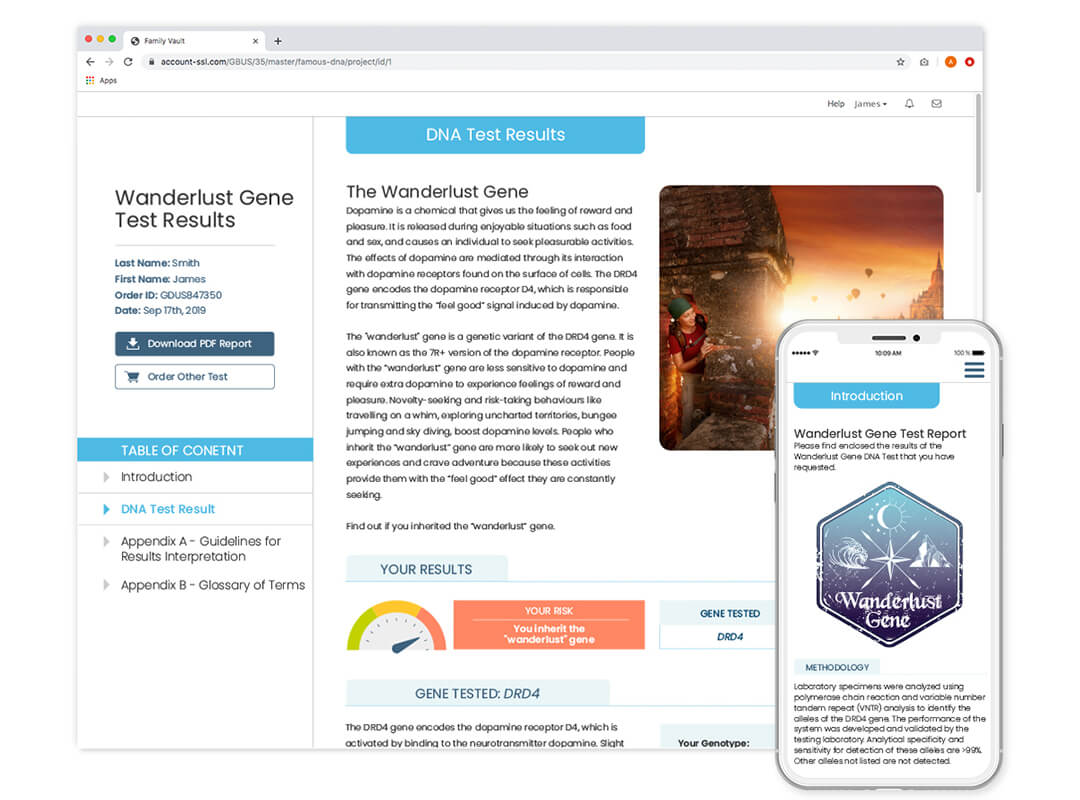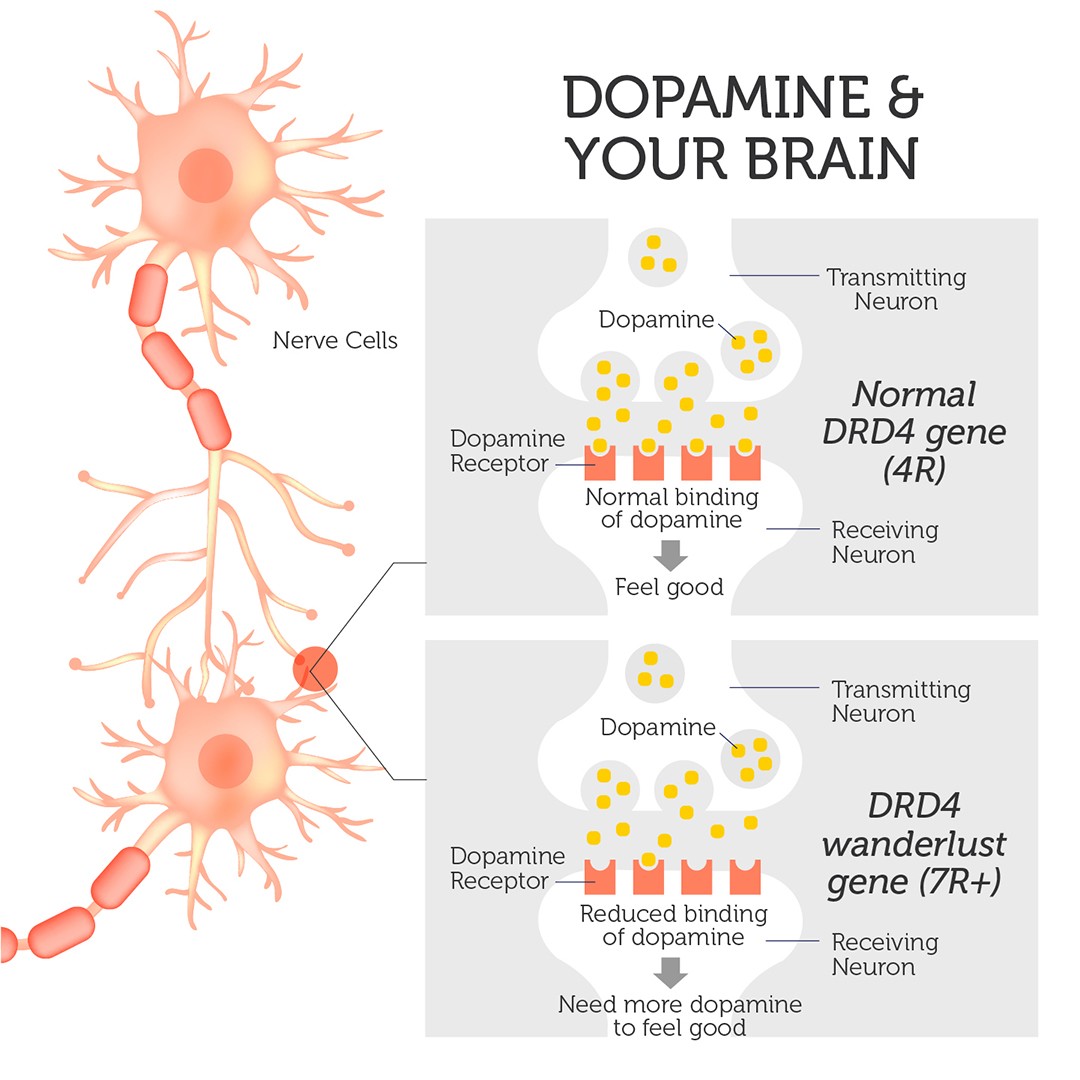Wanderlust Gene Test
Do you love adventure, travelling and discovering new places?
You may be one of those people with the “wanderlust” gene. Find out whether thrill seeking is in your DNA.
- Detects the “wanderlust” version of the DRD4 gene
- People who inherit at least one allele of 7 or more repeats (7R+) are more likely to travel often, take risks, explore new places, try new food and be sexually adventurous
- 100% private and confidential online results
If you already took the DNA Wanderlust Gene Test, login to your DNA Access account to access this app.
If you have not taken the DNA Wanderlust Gene Test, take the DNA test to access this app.
$149, results in 5 to 7 business days







